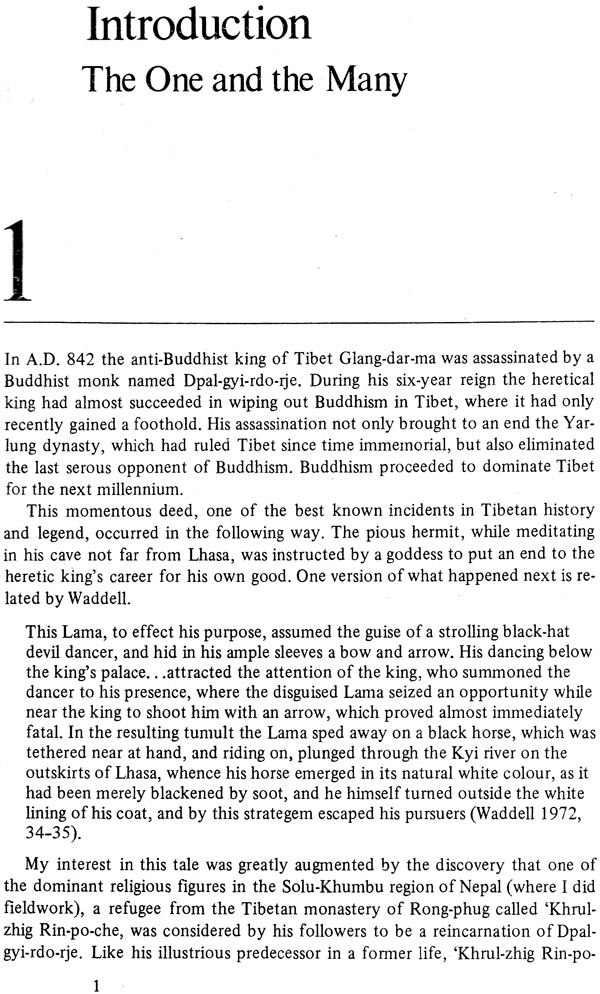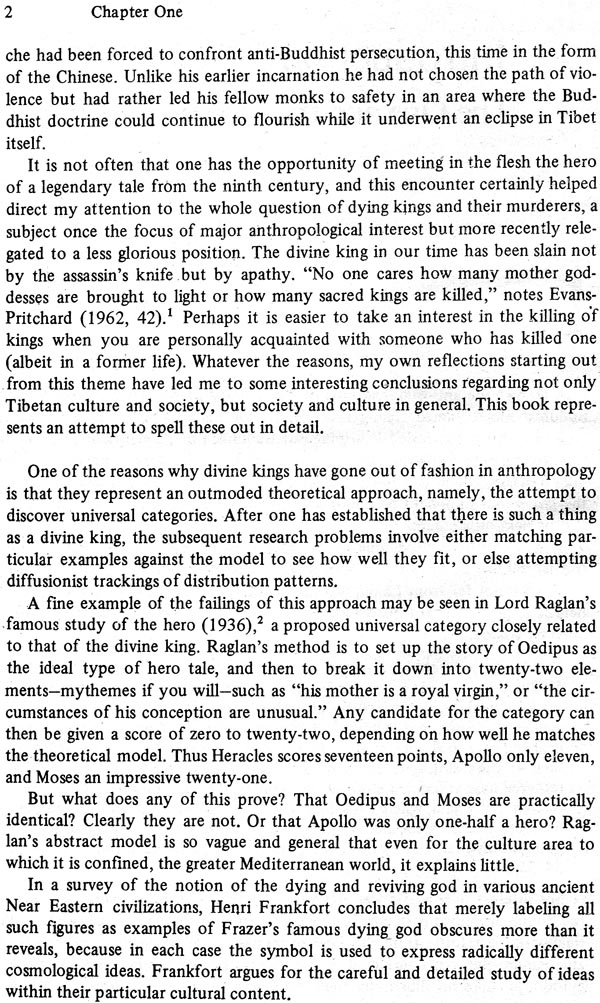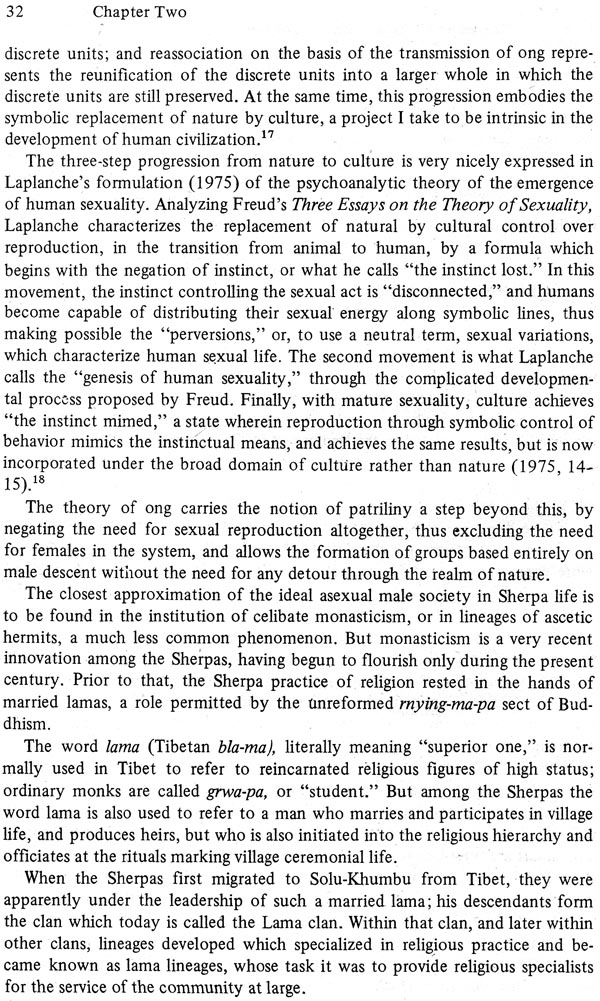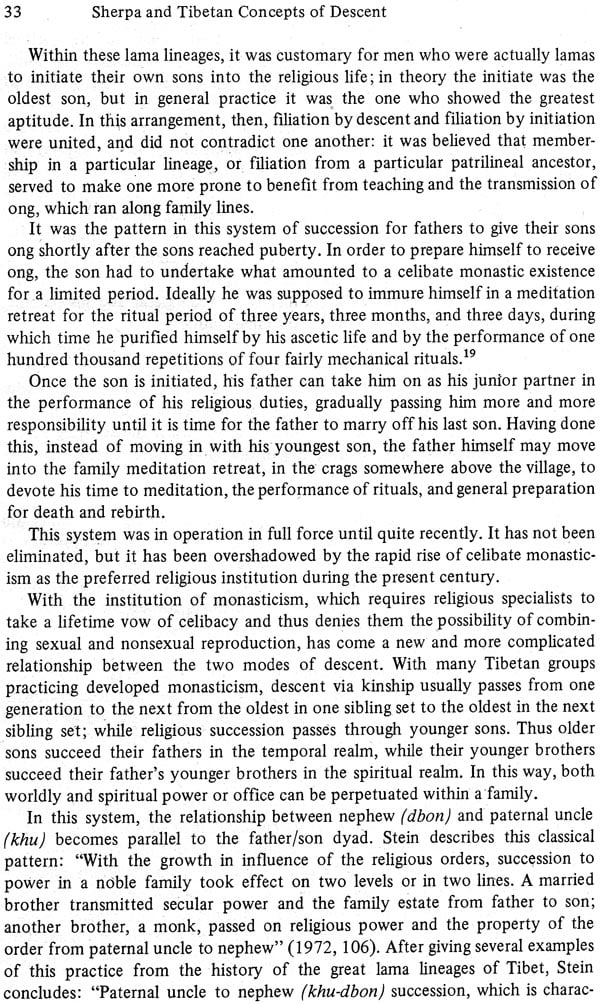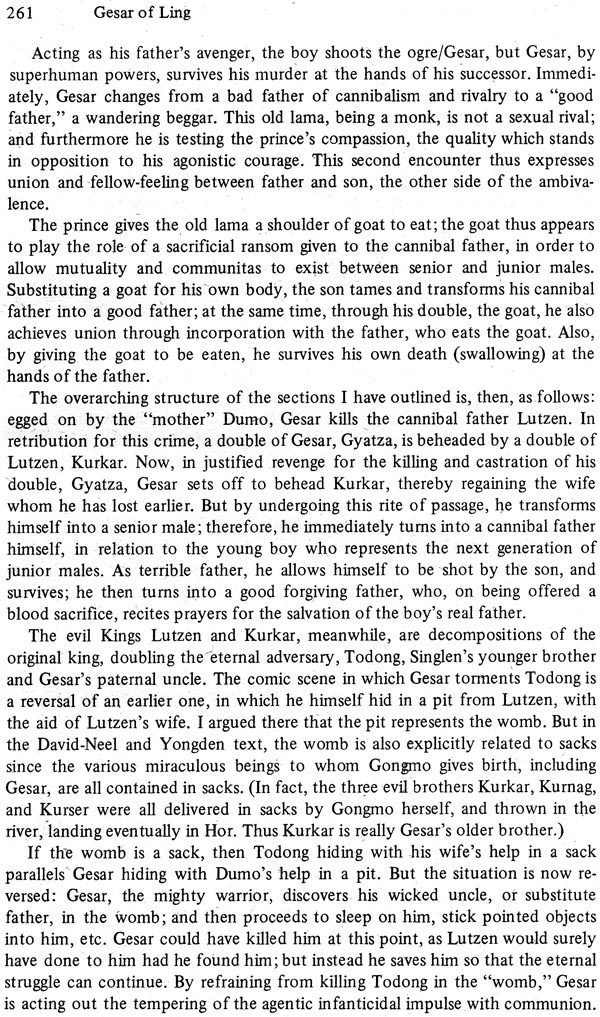
The Sherpas of Nepal in The Tibetan Cultural Context (An Old and Rare Book)
Book Specification
| Item Code: | NAR536 |
| Author: | Robert A. Paul |
| Publisher: | MOTILAL BANARSIDASS PUBLISHERS PVT. LTD. |
| Language: | English |
| Edition: | 1989 |
| ISBN: | 8120805682 |
| Pages: | 356 |
| Cover: | HARDCOVER |
| Other Details | 10.00 X 6.50 inch |
| Weight | 640 gm |
Book Description
In The Sherpas of Nepal in the Tibetan Cultural Context (earlier published under the title The Tibetan Symbolic World), Robert A. Paul presents a comprehensive interpretation of Tibetan cultural symbolism from a theoretical position that integrates psychoanalytic theory with aspects of structuralism and symbolic anthropology. He shows that many features of the culture the best-known monuments of Tibetan literature and religion are symbolic responses to a central paradox inherent in the succession of generations.
Since society endures, while the individuals who compose it are mortal, individuals can be seen as both identical with, and at the same time different from and opposed to, the individuals whom they succeed and who will in turn succeed them. The author shows that this fundamental contradiction is at the core of an apparently disparate array of symbolic forms and institutions, including Sherpa ideas of descent and inheritance; the Sherpa cosmology, pantheon, religious roles, and rituals: such Tibetan literary works as the Harvest Festival Dramas, the Life of Padma Sambhava, the Life of Milarepa, and the Gesar epic; and the rich body of lore surrounding the Tibetan theorcracy.
Robert. A. Paul received his Ph. D. in anthropology from the University of Chicago. He has taught at CCNY, Queen’s College and Stanford University.
Currently he is Charles Howard Candler Professor of Anthropology in the Institute of Liberal Arts at Emory University.
The field work in Nepal upon which much of this book is based was carried out with the support of grants from the National Institutes of Mental Health and the National Science Foundation, and with the kind permission of His Majesty's Government of Nepal. Further research support was provided by a grant from the Emory University Research Committee. I wish to express my gratitude to these institutions, as well as to Robert Detweiler and the Institute of Liberal Arts for providing a congenial and productive atmosphere, and to Ellen Mickie-wicz for her generosity and confidence in my work.
Among the many friends, colleagues, and mentors from whom I have received valuable encouragement, criticism, and guidance, I would like to thank in particular Steve Barnett, Karen Blu, Jean-Paul Dumont, T.N. Pandey, Paul Rabinow, Renato Rosaldo, Buck Schieffelin, David Schneider, Melford Spiro, and Harriet Whitehead. I would like to pay special tribute to the late Shelly Rosaldo, whose superb critical intelligence was a constant source of inspiration and challenge to me. Something of Shelly lives in the way she shaped the thinking of so many of us. My research has been since its inception a cooperative effort with Sherry Ortner. My debt to her exceeds my powers of expression, but I would like to acknowledge the great influence her ethnographic understanding and theoretical insight has had on my work. I owe a great deal, needless to say, to many Sherpas, but I particularly want to single out for thanks Mingma Tenzing Sherpa, whose contribution to the completion of this project has been of inestimable value. I owe an inexpressible debt for the completion of this book to Barrie Simmons, and another to Paul Watson, Lawrence Epstein has very graciously shared with me his profound knowledge of all matters Tibetan, and I am deeply grateful to him for his interest in and criticism of my work.
My task in preparing this manuscript has been greatly lightened by the excel-lent secretarial assistance of June Mann, Rosalyn Phillips, and Sher Castro. The editorial assistance of Barbara Sigman and the talents of Katharine dahl have been of immeasurable value. Jane Kromm, too, made greatly appreciated contributions to my research. My thanks to all of them.
Finally, I want to thank my wife, Leslee Nadelson, who has given me her support, wisdom, and criticism in just the right measure.
**Contents and Sample Pages**

